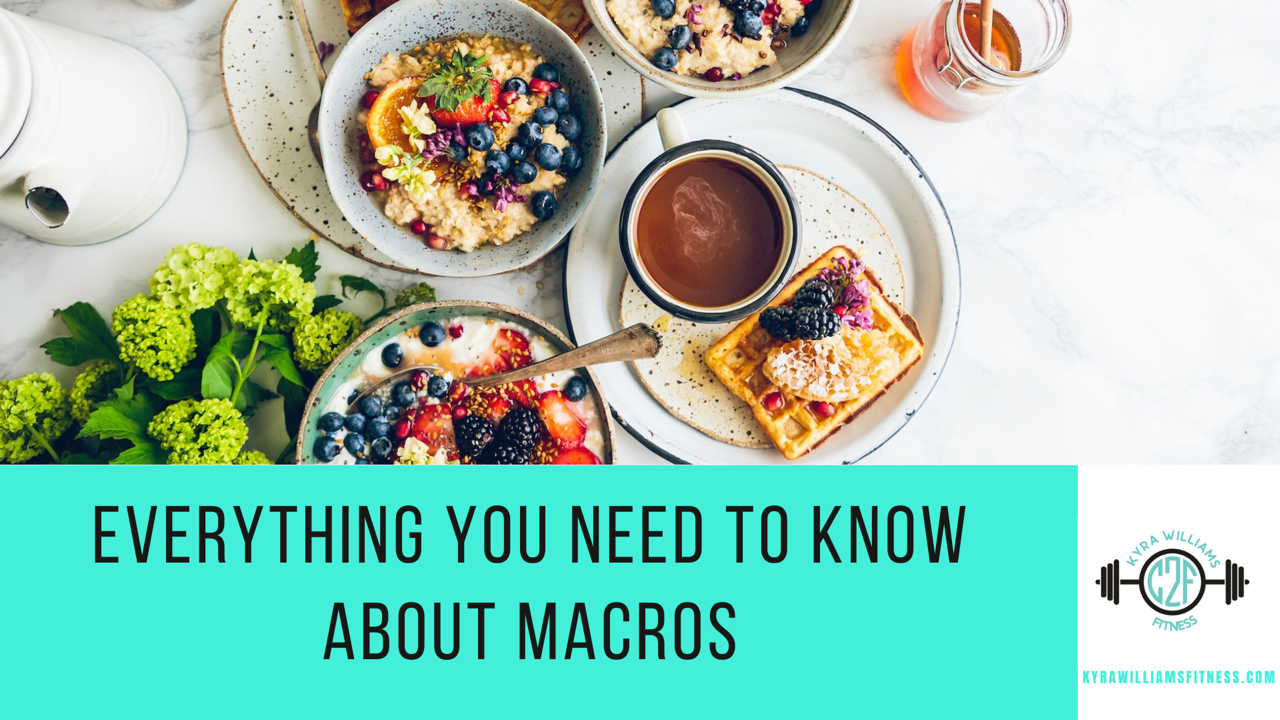What are macros? How do you count them? What is macros short for? You don’t need to be confused or overwhelmed anymore because I’m going to teach you everything you need to know about macros.
What are macros?
Macro is short for macronutrient. There are three macronutrients: protein, carbohydrates and fat. We can break those down into even more simple nutrients and if you’d like to dive deeper read this about protein and this about carbs. But for today, let’s stick with these three simple categories. Each serve a purpose in our bodies.
Protein is made of amino acids. These AA’s lend themselves to creating body proteins which make up the structure of our muscles, bones, tendons, cartilage, teeth and even blood vessels and cellular structure, amongst MANY other roles.
Carbohydrates are primarily used as energy in the body. Energy for our brain and body to function. If you like being awake, alert, walking, talking, jumping, lifting or other -ing, you need carbs.
Fat is another source of energy. Fat also helps cells also secrete hormones, pad our organs, insulate against temperature extremes, form cell membranes and can be converted to other things like bile and vitamin D if necessary.
How do we count macros?
When it comes to diet, we need to consume a bit of all three macros, however the amount we need varies person to person, hence the idea of counting macros.
When someone says they’re “counting their macros,” it means they are measuring and tracking their food to either hit a specific number of grams of each macro or a certain percentage of their calories come from each macro.
For example a person on a 2000 calorie diet may consume 30% protein, 40% carbs and 30% fat.
Knowing that each gram of protein is 4 calories, each gram of carbohydrate is 4 calories and each gram of fat is 9 calories you could also make the following calculations:
30% of 2000 is 600 calories. Divide the 600 calories by 4 and you get 150g protein.
40% of 2000 is 800 calories. Divide that by 4 and you get 200g carbs.
30% of 2000 is 600 calories. Divide that by 9 and you get 67g fat.
Then you aim to hit those numbers by manipulating your food choices each day.
It works well for some as it gives them the freedom to choose the foods they want and perhaps not be too rigid, while also achieving their goals.
Counting macros is a bit complicated and does require you have an understanding of what food contains what macros when you make your choices. It also doesn’t assume you are choosing healthy foods as you could make pizza, popcorn and protein bars fit your macros. You also have to play a guessing game at first to see what macros work best for you.
What are the pros and cons to counting macros?
In my opinion counting macros is a great tool to help you change your physique, can help you learn about what’s in your food, gives you food freedom, helps you create awareness by measuring and tracking and can add balance to your eating habits.
However it doesn’t take into considering nutrient density, doesn’t prioritize gut health, can be tedious and has a learning curve and isn’t the greatest for someone with a strained relationship with food.
If you need help setting up a meal plan that works for you, macros or not, let’s work together! Learn more about online training and nutrition coaching at kyrawilliamsfitness.com/signup
Your Coach,
Kyra
